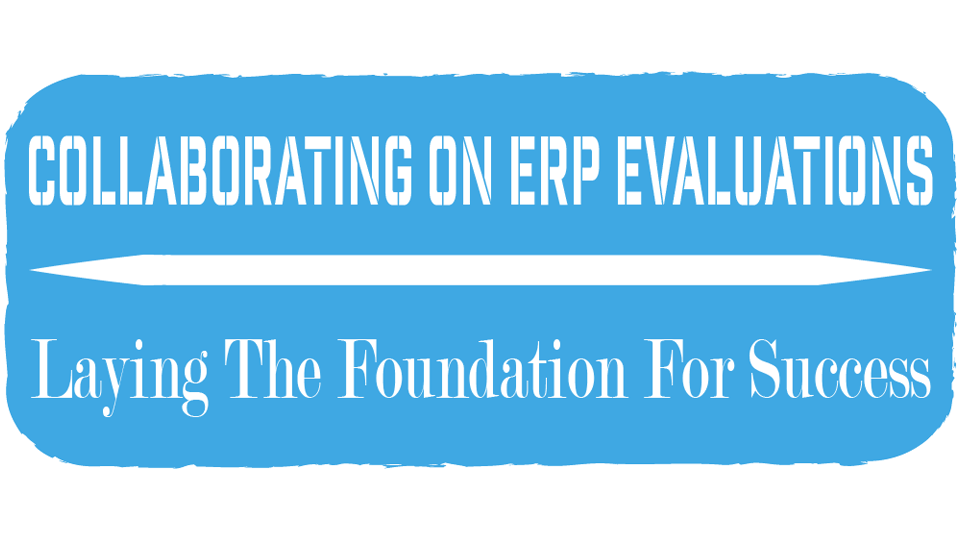Selecting a new ERP system for your business is usually a time and resource consuming process involving several of your key staff members as well as some time from executive management. It is, however, necessary to invest the time and resources to ensure the right choice is made to best fit your business goals and vision for the future success of your business. When the right choice is made, there are huge benefits to be gained in terms of competitive advantage, increased profit margins and market share, as well as improved cash flow and efficiency.
On the other hand, if the wrong choice is made, it could plunge your business into difficult times, and sometimes even put you in a worse situation than if you had stayed with the current system. Such is the dilemma and opportunity facing many management teams today. Some do not have a choice to do nothing and must make a choice to stay in business. It is often quite an uncomfortable position to be in.
The old school of thought is to look at the companies that are being considered to provide a new system as vendors, or simply those who can provide a solution and that what they offer is straight forward, where all options are quite similar, and where pricing is the major factor for selection. After all, accounting is accounting, right? That way of thinking is what I call Buyer 1.0. As technology, has progressed and the capabilities of what is possible have drastically improved over the last few years, it has become imperative for companies evaluating new ERP systems to change the way they look at vendors as something more, as solution providers, or maybe even as advisors and specialists. If that shift in evaluation point of view is not made, the company that continues to look at things through archaic lenses may very easily find themselves making a poor choice and in a world of pain, or worse yet, out of business.
This shift in evaluation approach is very easy to do, and yields strong benefits. The shift boils down to changing the way evaluation are perceived from a focus on product and pricing to, instead, a focus on your company’s vision, confirming the value derived from making the proper choice, and to collaborating with the solution providers competing for your business. By collaborating with these provider companies, one does not forego optimal pricing or capabilities sought, but rather retains those benefits and gains other benefits such as a better solution fit for your company, confidence that the value to your firm is can be verified, and strong and productive input from a fresh perspective in areas that your team may not have considered.
Collaborating with providers does not require a lot of extra effort on the part of your team.
The areas of collaboration that best benefit you are working together to build a vision option for you that makes use of each provider’s software
- you want to see what it would be like if you were to make that choice, and do this for each option so that you and your team can compare visions. The net result of this part of the collaborative work is a product presentation by each provider that specifically covers their solution to your needs and not just simply a showing all the features of their software.
- Another important advantage that comes from a collaborative evaluation process is finding out the chemistry between your team and theirs. No matter which solution and provider that you choose, the teams must blend well during the implementation process to yield a successful implementation result for your company. By working together on the evaluation, it will be evident how well the teams work together. If one choses the best product but there are communication problems between the teams, the chances for failure can rise dramatically. If the best software option is chosen but it never comes to a successfully implemented solution, the entire process is a failure. By collaborating, you get to see first-hand what to expect from each company competing for your business and how the interact with your team.
- The most important part of the collaboration with solution providers is working together to find out what it costs you today to do business the way you are doing it with your current system. Once those numbers are determined the comparison can be made to show cost savings and increases in profitability, market share as well as efficiency gains. Having this information available for each provider give a clear picture of the return on investment for each option and makes the selection process clearer and more simple. If a solution provider does not or cannot provide this advantage to you and your team, it may be a good idea to consider eliminating them from the competition for your business.
Choosing a new Cloud ERP system can be made easier and more decisive by collaborating with the solution providers in three main areas: working together during the evaluation process to get a sample of how the two teams blend, working together to justify the value if each option to your company, and lastly by ensuring that your team can envision how the solutions presented can resolve your issues and best help you achieve your goals. Doesn’t it make sense to invest a little more to minimize risks and maximize your value?

